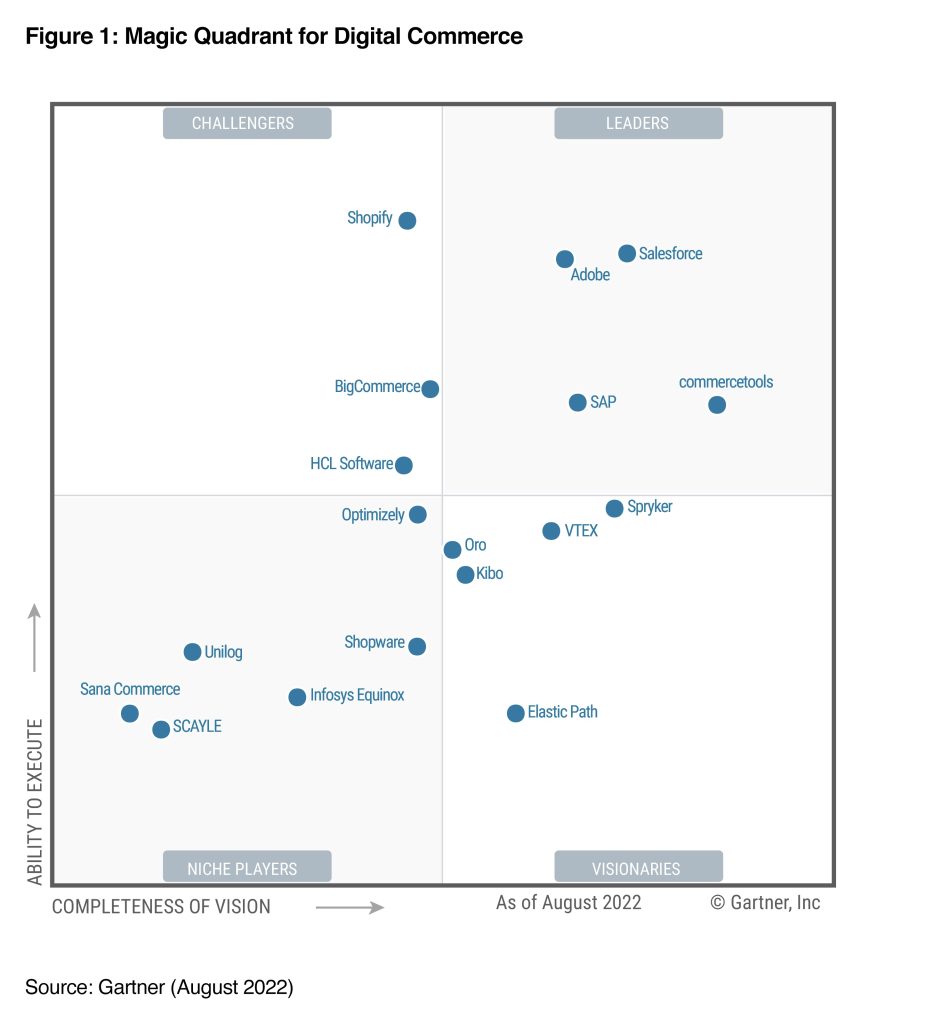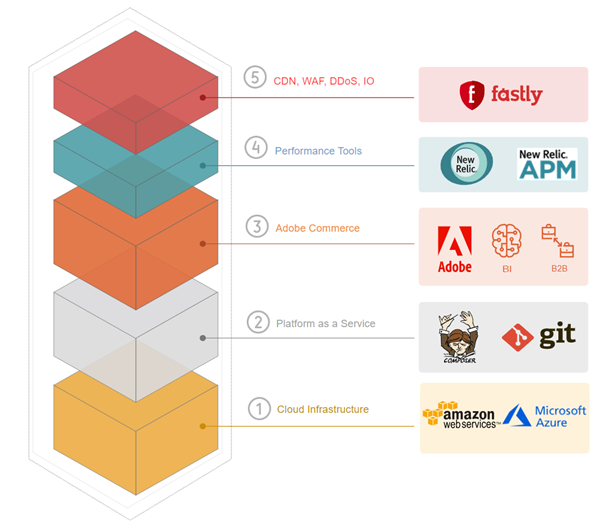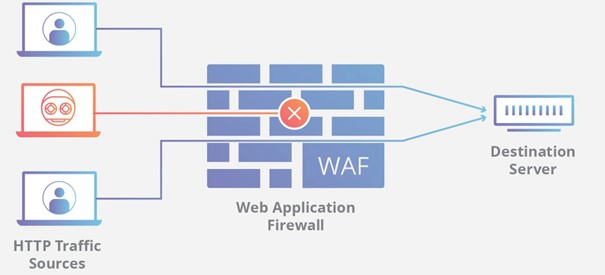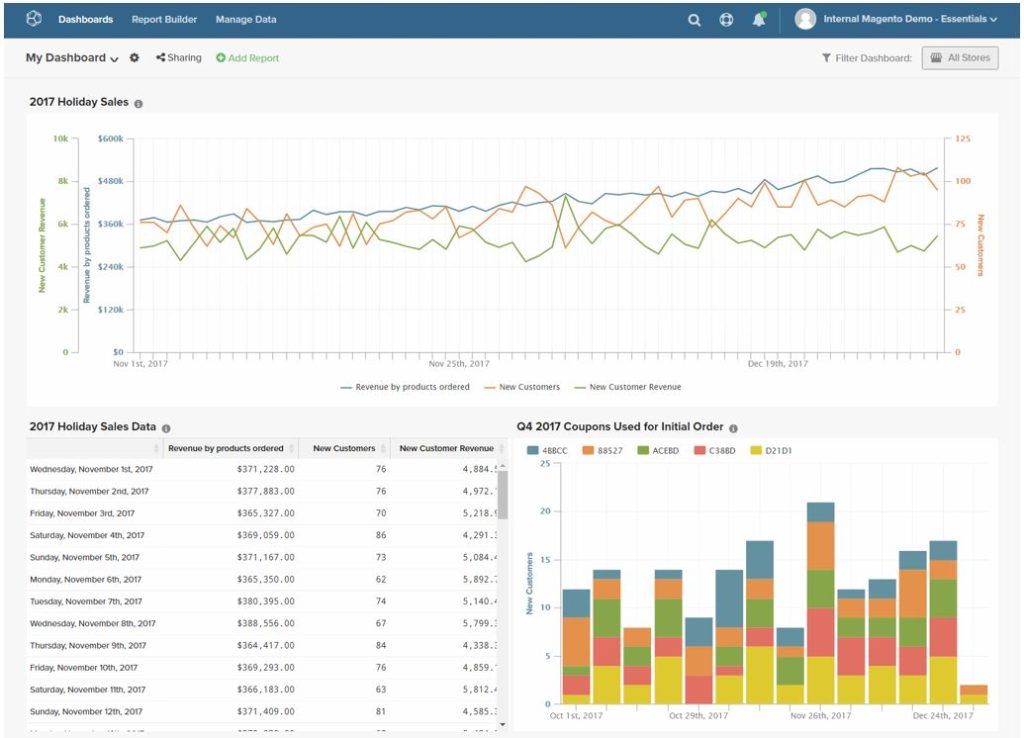In today’s digital age, e-commerce is a key factor in business success. Online shopping is gaining popularity, so companies are constantly looking for ways to improve their e-commerce platforms to meet customer expectations. One solution that has attracted a lot of attention is moving to Adobe Commerce Cloud. This platform offers many advanced features and benefits that can help businesses succeed.
As a migration team leader, I successfully migrated to Adobe Commerce Cloud for an automotive parts and refrigeration solutions supplier. Our main goal was to increase the performance of the online store, improve functionality and provide flexibility to handle the growing number of customers and orders.
Adventages of Adobe Commerce Cloud
Adobe Commerce Cloud is the cloud hosted version of Adobe, one of the world’s most popular e-commerce platforms.

It provides companies with a robust and scalable solution for managing their online stores, offering a wealth of features designed to improve customer service, streamline operations and increase sales.
So why should companies consider migrating to Adobe Commerce Cloud? Let’s take a look at some of the key benefits of this cloud-based e-commerce platform.
Scalability and flexibility
Adobe Commerce Cloud offers unparalleled scalability and flexibility, allowing companies to easily scale their online stores as their business grows. With a cloud-based infrastructure, companies can handle a surge in site traffic during peak periods, providing customers with a seamless shopping experience.
High performance
Adobe Commerce Cloud’s cloud-based architecture delivers high performance and faster page load times. This is crucial for e-commerce success, as slow-loading websites can result in higher rejection rates and abandoned shopping carts. By harnessing the power of the cloud, companies can provide their customers with a smooth and efficient shopping experience.

Enhanced security
Security is a major concern for any online business. Adobe Commerce Cloud provides robust security measures, including encryption, firewalls and ongoing security updates, to protect sensitive customer data and ensure a secure online environment. By migrating to the cloud, companies can leverage the expertise of cloud providers and their advanced security infrastructure.

Automatic updates and enhancements
Adobe Commerce Cloud is backed by Adobe, a well-known leader in digital experience and commerce, this means that companies can expect regular updates, feature enhancements and access to the latest technologies, keeping their e-commerce platform at the forefront of industry trends.
Companies can say goodbye to manual updates and maintenance tasks. The cloud-based platform automatically handles updates, security patches and infrastructure maintenance, allowing companies to focus on their core business and grow their business.
Integrated tools, functions, and reports
Adobe Commerce Cloud offers a wide range of integrated tools and features to enhance the functionality of online stores. It provides advanced marketing and personalization capabilities that enable businesses to create targeted campaigns, personalized shopping experiences and customized promotions.
The platform offers features such as:
- customer segmentation,
- product recommendations,
- loyalty programs,
- email marketing automation.
These tools enable companies to engage customers, increase conversions and encourage repeat purchases. Using these features, companies can optimize their operations and provide customers with a more personalized shopping experience.
Data-driven insights are invaluable for making informed business decisions. Adobe Commerce Cloud offers powerful analytics and reporting tools that provide comprehensive insights into your e-commerce performance. You can track key metrics, monitor sales trends, analyze customer behaviour and identify opportunities for optimization. This data-driven approach helps businesses refine strategies, improve conversions and maximize revenue.

Global expansion
For companies that want to expand globally, Adobe Commerce Cloud provides robust capabilities to support multiple stores and multiple currencies. The platform supports multiple languages, tax regulations and shipping options, making it easier for companies to serve diverse markets and reach a wider customer base.
Improved development environment
Adobe Commerce Cloud offers a streamlined development process with features such as Git integration, development and transition environments, and continuous integration tools. This enables developers to work efficiently, collaborate effectively and implement changes seamlessly, ultimately reducing time to market for new features and updates.
Community and support
Adobe has a large and dynamic community of developers, partners and users. By migrating to Adobe Commerce Cloud, companies gain access to this thriving ecosystem, which offers a wealth of resources, knowledge sharing and support. The community provides forums, documentation, extensions and regular updates, so businesses can stay on top of the latest trends, best practices and innovations in e-commerce.
The process of migrating from the local version of Adobe to Adobe Commerce Cloud
Here’s an overview of the process of migrating from the local version of Adobe to Adobe Commerce Cloud, which includes several steps to ensure a successful transition.
Preparation before migration
- Evaluate your current local configuration, including hardware, software and databases. Identify the strengths, weaknesses and adaptations of your current system. Assess the compatibility of your data and configuration with Adobe Commerce Cloud.
- Define your migration strategy and goals: set clear objectives, timeframe and budget for the migration. Define the scope of the migration, including: what data, features and customizations will be moved to Adobe Commerce Cloud. Develop a comprehensive migration plan that identifies the tasks, dependencies and resources required for a smooth transition.
- Select the appropriate Adobe Commerce Cloud architecture: Starter or Pro, based on business requirements such as anticipated traffic, resource requirements and budget.
Migration: customizations and integrations, data migration
- Data preparation: clean and organize your data to ensure accuracy and consistency. Identify the data you want to transfer, including customer data, product information, order history and other relevant custom data. Address any inconsistencies or data discrepancies at this stage.
- Data migration: execute a data migration plan, transferring cleaned and structured data from your local system to Adobe Commerce Cloud. Conduct detailed testing and verification to ensure data accuracy and integrity.
- Customization and development: customize and develop your Adobe Commerce Cloud store to replicate the functionality and design of your local setup. This may include creating or modifying themes, templates, extensions and integrations. Ensure that any customizations or integrations are compatible with the Adobe Commerce Cloud environment.
Migration: configuration, settings, testing
- Configuration: set up your Adobe Commerce Cloud instance, configuring basic store information, payment gateways, shipping methods, tax regulations, email settings and other necessary configurations. Customize the look, branding and layout of your store according to your requirements.
- Testing and quality assurance: conduct extensive testing of the transferred store to ensure its functionality, performance and user experience. Test various scenarios, including product browsing, shopping cart functionality, order placement, payment processing and customer registration. Verify that all customizations, integrations and extensions work seamlessly in the Adobe Commerce Cloud environment.
Implementation: startup and post-migration support
- Launch planning and execution: plan the launch date of the Adobe Commerce Cloud store. Coordinate with stakeholders, and make sure all necessary configurations are done. Closely monitor the store after launch to quickly resolve any issues and provide a seamless service to customers.
- Post-migration support and optimization: work closely with a certified partner to resolve any post-migration issues, perform optimizations and provide ongoing support for your Adobe Commerce Cloud store. Continually monitor and improve your store based on customer feedback, analytics and industry best practices.
Implementation: training and readiness of the team
- Train and prepare your team: provide training to your team members on how to use and manage the Adobe Commerce Cloud platform. Familiarize them with the features, administrative tools and workflows specific to a cloud environment. Make sure your team is ready to handle the daily operations of the migrated store.
Migration description – a real case
The timeline
The timeline for migrating to Adobe Commerce Cloud for an automotive parts and refrigeration solutions provider can vary depending on the complexity of the project, the size of the catalogue, the number of integrations and other factors. Our estimate is as follows:
- planning and preparation: 4 weeks,
- migration: data integration: 3 weeks,
- migration: personalization and configuration: 3 weeks,
- migration: testing and quality assurance: 3 weeks,
- implementation, commissioning, and training: 2-3 weeks.
Challenges
Challenges that arose during the migration process and include:
- complex data mapping and cleansing (e.g., redundant logs, old products),
- integrations with existing systems, especially if they are outdated or lack proper documentation,
- customization and development of specific features unique to the industry, e.g., customized pricing for each customer, changing prices throughout the day,
- providing a seamless user experience across devices and platforms,
- SEO optimization to improve visibility in a competitive marketplace,
- change management and staff training to adapt to the new system.
The result
The result of a successful migration to Adobe Commerce Cloud for the client has yielded several positive results, including:
- improved site performance and scalability to handle increased traffic and sales volume,
- improved customer experience with intuitive navigation, advanced search features and personalized recommendations,
- streamlined inventory management and pricing structures to support product complexity,
- integration with existing systems to streamline operations and increase efficiency,
- increased online visibility and search rankings through SEO optimization,
- higher conversion rates and improved customer retention, leading to increased revenue and profitability – in the benchmarking phase.
Summary
Migrating to Adobe Commerce Cloud offers many benefits to businesses looking for a scalable, secure and feature-rich e-commerce platform. By moving to the cloud, organisations can streamline infrastructure management, increase site performance and leverage advanced tools and features to drive growth.
While the migration process may require careful planning and execution, the long-term benefits outweigh the initial effort, enabling companies to maintain an edge in a competitive e-commerce environment.
















Leave a comment